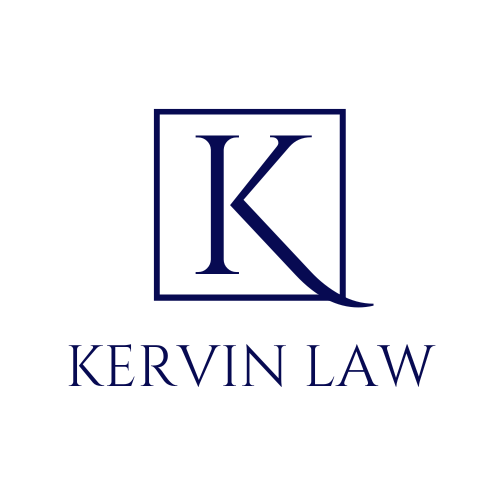Better signage can lead to fewer car accidents.
Improving safety at road intersections is a critical aspect of overall traffic safety.
Several key issues contribute to intersection safety challenges, and addressing these problems can help reduce accidents and enhance the safety of road users. Here are some proven ways to improve road safety:
Visibility and Signage:
Inadequate visibility of road signs, traffic signals, and other important information can lead to confusion and accidents.
Insufficient or poorly maintained signage can result in drivers not receiving clear instructions, increasing the risk of collisions.
Traffic Signal Timing and Coordination:
Incorrect or poorly coordinated signal timings can lead to congestion, delays, and an increased likelihood of accidents.
Outdated signal systems may not adequately account for changes in traffic patterns over time.
Intersection Design:
Poorly designed intersections, including inadequate lane markings, lack of turning lanes, and confusing layouts, can contribute to accidents.
Insufficient consideration for pedestrians and cyclists in intersection design can also pose safety risks.
Distracted Driving:
The use of mobile phones and other distractions by drivers at intersections can lead to delayed reactions and increased chances of collisions.
Education and enforcement efforts are crucial to reduce distracted driving at intersections.
Speeding and Aggressive Driving:
Speeding through intersections and aggressive driving behaviors increase the severity of accidents.
Enforcement of speed limits and efforts to address aggressive driving can contribute to improved intersection safety.
Inadequate Lighting:
Poor lighting conditions at intersections, especially during nighttime, reduce visibility and increase the risk of accidents.
Proper street lighting and maintenance are essential for intersection safety.
Pedestrian and Cyclist Safety:
Insufficient infrastructure for pedestrians and cyclists, such as crosswalks, bike lanes, and pedestrian signals, can lead to accidents.
Educating both drivers and pedestrians about the rules at intersections is crucial for safety.
Inadequate Enforcement:
Lack of enforcement of traffic laws, including red-light running and failure to yield, can contribute to unsafe conditions at intersections.
Adequate police presence and the use of traffic cameras can help deter violations.
Poor Weather Conditions:
Adverse weather conditions, such as rain, snow, or fog, can reduce visibility and traction, making intersections more hazardous.
Drivers need to adjust their behavior in response to changing weather conditions.
Limited Accessibility for People with Disabilities:
Lack of accessible infrastructure, such as curb ramps and crosswalk signals, can pose challenges for people with disabilities at intersections.
Ensuring universal accessibility improves safety and inclusivity.
Addressing these key issues involves a combination of engineering solutions, effective traffic management, public education, and law enforcement efforts. A holistic approach that considers the needs of all road users is essential for achieving better safety at road intersections.
How can better signage prevent car accidents?
Competently addressing the issues of signage at intersections and on our roads can significantly contribute to the prevention of car accidents. Here’s how:
Clear Communication:
Adequate visibility ensures that road signs, traffic signals, and other important information are easily seen by drivers. Clear communication through visible signage helps drivers understand the rules and conditions at the intersection.
Reduced Confusion:
Well-maintained and properly placed signs reduce the likelihood of confusion among drivers. When drivers can easily interpret signs and signals, they are more likely to make informed and safe decisions at intersections.
Early Recognition of Hazards:
Good visibility allows drivers to recognize potential hazards early, giving them more time to react appropriately. This is crucial in situations where sudden stops, lane changes, or yielding is required.
Prevention of Missed Signals:
Inadequate visibility may lead to drivers missing important signals or not noticing changes in traffic conditions. Improved visibility ensures that drivers are aware of traffic lights, stop signs, and other critical signals, reducing the risk of accidents caused by failure to obey signals.
Enhanced Decision-Making:
Clear visibility allows drivers to make informed decisions based on the information provided by road signs and signals. This is essential for safe navigation through intersections, especially in complex or busy traffic scenarios.
Prevention of Rear-End Collisions:
Proper visibility and signage help prevent sudden stops or unexpected maneuvers by drivers, reducing the likelihood of rear-end collisions. Drivers can anticipate changes in traffic flow and respond appropriately.
Improved Nighttime Visibility:
Adequate street lighting and reflective signage enhance visibility during nighttime, reducing the risk of accidents in low-light conditions.
Pedestrian Safety:
Clear visibility is not only important for drivers but also for pedestrians. Properly marked crosswalks, pedestrian signals, and visible signage contribute to pedestrian safety at intersections.
Prevention of Wrong-Way Driving:
Well-marked and visible signs help prevent wrong-way driving at intersections. This is crucial for reducing head-on collisions and other accidents associated with vehicles traveling in the wrong direction.
Addressing visibility and signage issues often involves regular maintenance of road infrastructure, proper placement of signs, adequate street lighting, and consideration of visibility in intersection design.
Additionally, public education campaigns can inform drivers about the importance of adhering to traffic signs and signals for overall road safety. By proactively addressing these visibility and signage challenges, the likelihood of car accidents at intersections can be significantly reduced.
Who regulates road signs?
Road signs are typically regulated by government authorities at various levels, depending on the country and its administrative structure. In many cases, road sign regulations are set by transportation or traffic management agencies. Here are some general guidelines:
National Level:
In some countries, the national government establishes and regulates road sign standards and guidelines. National transportation or road safety agencies may be responsible for creating and enforcing these standards.
State or Provincial Level:
In countries with a federal or decentralized system, individual states or provinces often have their own transportation departments or agencies. These entities may set specific regulations for road signs within their jurisdiction, ensuring consistency with national standards.
Local Level:
Local municipalities or city governments may have authority over road signs within their boundaries. Local transportation or traffic management departments typically handle the installation and maintenance of road signs in urban and suburban areas.
International Standards:
In some cases, international standards, such as those recommended by the Vienna Convention on Road Signs and Signals or similar agreements, may influence or guide the creation of road sign regulations. Countries that are parties to such conventions may adopt common standards to ensure consistency in road signage, especially for international travel.
Transportation and Traffic Agencies:
Dedicated transportation or traffic agencies, regardless of the level of government, often play a key role in regulating road signs. These agencies are responsible for developing guidelines, conducting safety assessments, and overseeing the implementation of road signage programs.
Collaboration:
Collaboration between different levels of government is common to establish consistent road sign standards. While national guidelines may set the framework, local authorities may have some flexibility to adapt signs to meet specific regional needs.
It’s important for road signs to adhere to standardized shapes, colors, and symbols to ensure universal understanding among drivers and pedestrians. Additionally, regulatory agencies often update and revise road sign standards to incorporate advancements in safety and technology.
How can road signs offer night time visibility?
Ensuring night-time visibility of road signs is crucial for maintaining safety on the roads. Various strategies and technologies are employed to enhance the visibility of road signs during nighttime. Here are some ways road signs can offer better visibility at night:
Reflective Materials:
Many road signs are coated with retroreflective materials. These materials reflect light back towards its source, such as headlights from vehicles, making the sign more visible in low-light conditions.
Common retroreflective materials include glass beads or microprisms embedded in the sign’s surface.
High-Intensity Sheeting:
Some road signs use high-intensity reflective sheeting, which enhances visibility at night and during adverse weather conditions.
High-intensity sheeting is designed to provide better retroreflection and durability compared to standard reflective materials.
Fluorescent Colors:
The use of fluorescent colors on road signs can improve daytime and nighttime visibility. Fluorescent materials are more reflective and can enhance contrast with the background.
LED Illumination:
Some road signs, particularly those in urban areas, may be equipped with LED (light-emitting diode) illumination. LEDs are energy-efficient and can provide bright, clear visibility at night.
LED-enhanced signs are often used for critical information or in areas with high traffic volumes.
Proper Lighting Design:
Adequate street lighting in the vicinity of road signs helps improve overall visibility. Well-lit roads make it easier for drivers to see and interpret the information presented on signs.
Contrast and Legibility:
Ensuring a high level of contrast between the sign and its background is essential for readability. This is particularly important at night when visibility is reduced.
Choosing fonts and symbols that are easily legible in low-light conditions contributes to effective communication.
Maintenance:
Regular maintenance is crucial to preserving the effectiveness of road signs. This includes cleaning reflective surfaces, replacing damaged signs, and ensuring that lights, if used, are in working order.
Uniformity and Standards:
Following standardized guidelines for road sign design, such as those established by transportation authorities, helps maintain consistency and ensures that signs are visible and recognizable to drivers.
Advanced Technologies:
In some areas, innovative technologies such as solar-powered lighting systems are used to illuminate road signs without relying on traditional power sources.
Driver Education:
Educating drivers about the importance of paying attention to road signs and adjusting their speed based on visibility conditions can contribute to overall safety.
By incorporating these strategies, road authorities can enhance the visibility of road signs, reduce the risk of accidents, and improve overall road safety, especially during nighttime conditions.
Better road signage leads to fewer car crashes.
However, it is well-established that inadequate or unclear road signage can contribute to accidents and traffic incidents. Common problems associated with poor signage include confusion, delayed reactions, and failure to comply with traffic rules. Accidents resulting from these issues may include rear-end collisions, sideswipes, or vehicles running off the road.
To address the impact of poor signage on road safety, authorities work to improve signage design, placement, and maintenance. They may also conduct investigations into the causes of accidents to identify any role that signage issues may have played.
Contact a Covington car accident lawyer if you have been injured in a car accident.


